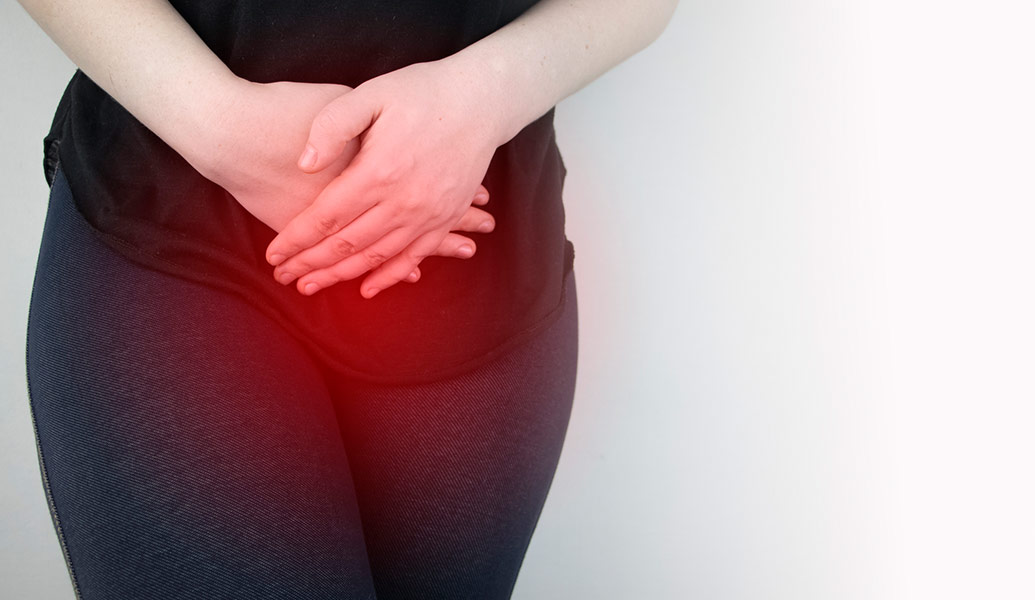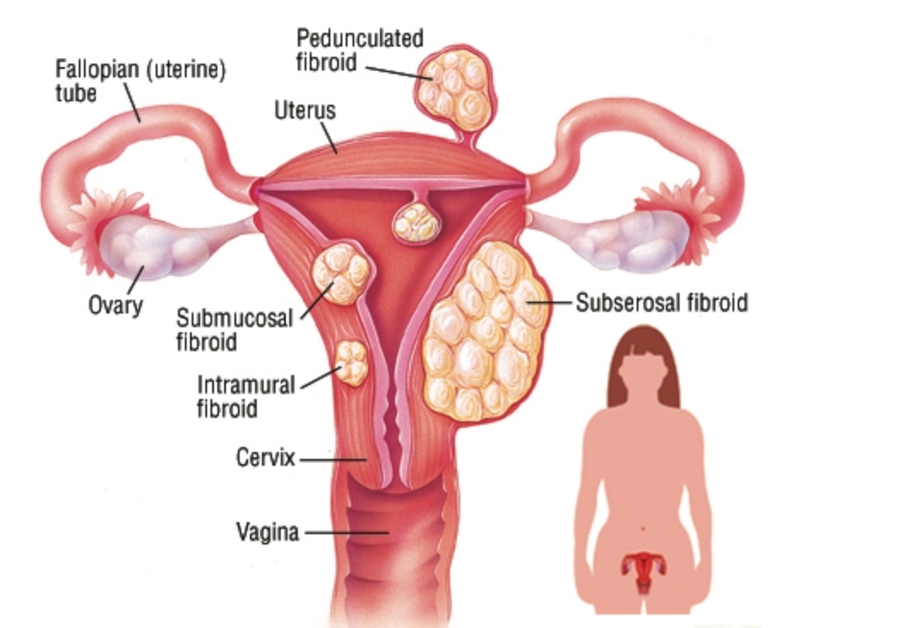
Understanding What Uterine Fibroids Are

What Are Uterine Fibroids?
Fibroids are benign/non-cancerous tumours associated with the uterus. They are made up of dense, fibrous tissue, which is where the term ‘fibroids’ comes from. Fibroids can appear at almost any time after puberty. However, fibroids are most likely to be diagnosed during pregnancy or perimenopause.
Fibroids develop when a muscle cell in the uterus clones itself and expands. They almost never spread beyond the womb and are not life-threatening.
Many remain small and cause no symptoms or issues; however, others may enlarge and affect a woman’s quality of life by causing excess bleeding or by placing pressure on abdominal organs.
Fibroids are also very vascular. ‘Vascular’ is a medical term that means a strong and well-developed blood vessel system to carry oxygen and nutrients to a tissue. The fact that fibroids are vascular means that surgically removing is often bloody and debilitating.
Where Do Fibroids Grow?
Submucosal fibroids
Grow inside the uterine cavity. This is the space where a growing baby lives. Fibroids here can cause very heavy menstrual bleeding, fertility problems, and issues with carrying or delivering a child.
Intramural fibroids
Grow within the muscular wall of the uterus. Fibroids growing in this area can cause pelvic pain, abnormal menstrual cycles, and uncomfortable pressure.
Subserosal fibroids
Grow on the outside wall of the uterus. This produces fibroid symptoms like back pain and bladder pressure as growing fibroids press on nerve endings and/or other organs in the body.
Pedunculated fibroids
Describes fibroids that grow on stalks, like mushrooms. They can emerge from either the inside or outside uterine walls. A twisted or impeded stalk will cause severe pelvic pain.

Why Do Fibroids Form?
Although certain factors are associated with fibroid development, there is no clearly defined cause. The condition is extremely common. 1-4 women over age 40 have fibroids. But fibroids are also found in younger women (usually during pregnancy).
The risk factors are:
- Heredity. If your mother or grandmother had fibroids there’s a good chance you will too. There hasn’t been a gene isolated or associated with fibroid development yet.
- Ethnicity. While fibroids appear in women of all races, statistical evidence points to ethnicity as an influencer. African American women are more likely to have fibroids. Women of Asian descent are the least likely.
- Weight-gain. The fat cells in the body secrete substances that mimic estrogen. This may contribute to fibroid formation.
What Are the Symptoms
Fibroids can develop anywhere in or on the womb and can range in size. Smaller fibroids with no symptoms may be detected during a woman’s routine gynaecologic visit or prenatal exam.
Symptomatic fibroids may cause:
- Heavy and prolonged bleeding during menstrual cycles is a common symptom of fibroids. As the uterus contracts to slow the bleeding, pain from cramping can also occur.
- The three types of fibroids: intramural, subserosal, and submucosal can produce different symptoms based on the size and location of the fibroids. Intramural and submucosal fibroids are usually the cause of heavy or abnormal bleeding during a menstrual cycle.
- Heavy and abnormal bleeding leads to weakness, fatigue, painful cramps in the abdomen and back, and in some cases anaemia.
- Depending on their size or location fibroids can create undue pressure on nearby organs. If a fibroid presses on the bladder, it can cause urinary frequency or urgency. If the rectum is compressed, the patient may experience bloating and constipation. When a fibroid is low in the pelvic region, the patient may have discomfort sitting or during intercourse. And if a fibroid is high on the uterus, the patient may notice or feel an abnormal bulge in her belly.
- If, or when a larger uterine fibroid outgrows its blood supply and begins to die, it can cause sharp pain in the process.
Fibroids And Pregnancy
Fortunately, in most instances, fibroids do not negatively interfere during a pregnancy. However, depending on the size of a fibroid and location within the uterus, complications may arise. Fibroids that alter the shape of the uterine cavity may reduce fertility.
Fibroids may prevent the sperm and egg from meeting, as well as hinder an embryo’s ability to implant.
One surgical option for fibroid treatment is a myomectomy, which cuts out existing fibroids.
During pregnancy, hormones in the body cause the uterus to grow and accommodate for the foetus, and in some cases, this massive influx of hormones may also cause fibroids to enlarge creating issues both during pregnancy and delivery.
Other consequences of fibroids in pregnancy include acute abdominal pain and, in some instances, bleeding if the placenta is near the fibroid.
There can also be challenges during delivery. Fibroids may cause the baby to lie in the breech, or transverse positions, or block the progress of labour and expulsion of the placenta. In these cases, your doctor may recommend a caesarean section to avoid further problem.
Fibroids in/after Menopause
Most fibroids will shrink to some degree once a woman has gone through menopause because hormone levels drop dramatically, however, they do not disappear.
If a woman chooses hormone replacement therapy (HRT) after menopause, she could still experience symptoms and even fibroid growth after menopause. The time from perimenopause to menopause varies for each woman and it could take years to see any reduction of fibroid size or symptoms.
Very large or multiple fibroids may not shrink enough to alleviate symptoms such as a distended abdomen, pelvic pressure similar to period cramps, and urgency to urinate when fibroids press on the bladder.
Treatment
Even when fibroids are found, not all growths call for treatment. Some women will choose to delay treatment until and unless they experience problematic symptoms. In cases where uterine fibroid treatment is indicated, a main consideration is whether or not the patient plans to become pregnant.
Treatment of Uterine Fibroids Has a High Success Rate
If a woman is planning to be pregnant with a symptomatic or a large fibroid we can remove fibroids via a procedure called myomectomy, leaving the uterus intact and preserving potential fertility.
In patients with fibroids in the endometrial cavity (inside womb), a hysteroscope camera and associated instrument can be used to remove it. Patients typically recover quickly from this same-day surgery, with all symptoms resolved.
If a woman is not seeking pregnancy, a variety of hormonal methods can be used to control symptoms such as bleeding. While hormone therapy in some instances, can also temporarily shrink fibroids by reducing estrogen levels, they cannot eliminate them completely. Most used drugs are contraceptive pills, IUD (Mirena) and GnRH agonists.
If a patient does not plan to become pregnant, we can offer additional options such as laparoscopic hysterectomy, a measure that can resolve bleeding or fear of recurrence.
Be assured, today’s hysterectomy procedure is minimally invasive and very well tolerated by most women. Ovaries and the hormones they produce are left intact and sexual function is preserved.
How Create Health Can Help You
If you are experiencing bothersome fibroid symptoms or think you may have them, schedule an appointment with one of our highly skilled gynaecologists for management and if it is diagnosed, we can formulate a personalised treatment plan for you.
To book an appointment, contact us at 03 9873 6767 or fill out this contact form and we will get back to you shortly.
« back


 (03) 9873 6767
(03) 9873 6767  By Dr Sugandha Kumar - Obstetrician and Gynaecologist
By Dr Sugandha Kumar - Obstetrician and Gynaecologist